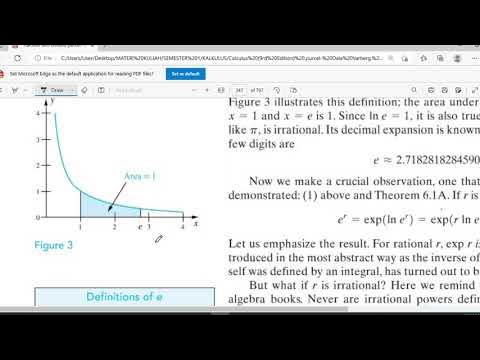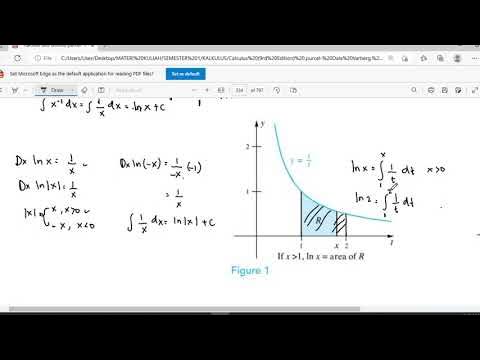Logarithmic Functions | Transforming Logarithmic Equation to Exponential Form and Vice Versa
Summary
TLDRIn this educational video, the teacher introduces logarithmic functions, explaining their properties and how they relate to exponential functions as their inverses. The video covers the basics of logarithmic equations, converting between logarithmic and exponential forms, and provides examples to clarify the process. The instructor also walks through several practice problems, demonstrating how to express logarithmic functions in exponential form and vice versa. The video aims to help students better understand these mathematical concepts and encourages viewers to engage by asking questions and suggesting future topics.
Takeaways
- 📚 The video discusses logarithmic functions and their relationship with exponential functions.
- 🔢 A logarithmic function is written as f(x) = log_b(x), where b is the base of the logarithm.
- 📈 Logarithmic functions are the inverse of exponential functions.
- ⚠️ The base of a logarithmic function (b) must be greater than 0 and not equal to 1.
- ↔️ Logarithmic and exponential functions can be converted between each other. For example, log_b(x) = y can be rewritten as b^y = x.
- ✏️ The video includes examples showing how to convert between logarithmic and exponential forms, such as log_6(36) = 2, which becomes 6^2 = 36.
- 💡 The domain and range of logarithmic functions correspond to the domain and range of exponential functions, as they are inverses.
- 🔄 Several examples were worked through, such as converting 5^2 = 25 to log_5(25) = 2.
- 📊 The video emphasizes understanding how to identify base, exponent, and value when converting between logarithmic and exponential forms.
- 👍 Viewers are encouraged to comment with questions and requests for future topics related to logarithmic and exponential functions.
Q & A
What is the basic form of a logarithmic function?
-A logarithmic function is typically expressed as f(x) = log_b(x), where 'b' is the base and 'x' is the input.
How can a logarithmic function be represented in terms of y?
-A logarithmic function can also be written as y = log_b(x), where 'y' represents the function's output and 'b' is the base.
What are the restrictions on the base of a logarithmic function?
-The base 'b' of a logarithmic function must be greater than zero and cannot be equal to one.
What is the relationship between logarithmic and exponential functions?
-A logarithmic function is the inverse of an exponential function.
How do you convert a logarithmic function into an exponential form?
-If y = log_b(x), the equivalent exponential form is x = b^y.
What is the exponential form of log_6(36) = 2?
-The exponential form of log_6(36) = 2 is 6^2 = 36.
How do you convert an exponential function into a logarithmic form?
-If the exponential function is b^y = x, the equivalent logarithmic form is log_b(x) = y.
What is the logarithmic form of 2^3 = 8?
-The logarithmic form of 2^3 = 8 is log_2(8) = 3.
How do you express 6^-2 = 1/36 in logarithmic form?
-The logarithmic form of 6^-2 = 1/36 is log_6(1/36) = -2.
What is the logarithmic form of 10^2 = 3x - 5?
-The logarithmic form of 10^2 = 3x - 5 is log_10(3x - 5) = 2.
Outlines

هذا القسم متوفر فقط للمشتركين. يرجى الترقية للوصول إلى هذه الميزة.
قم بالترقية الآنMindmap

هذا القسم متوفر فقط للمشتركين. يرجى الترقية للوصول إلى هذه الميزة.
قم بالترقية الآنKeywords

هذا القسم متوفر فقط للمشتركين. يرجى الترقية للوصول إلى هذه الميزة.
قم بالترقية الآنHighlights

هذا القسم متوفر فقط للمشتركين. يرجى الترقية للوصول إلى هذه الميزة.
قم بالترقية الآنTranscripts

هذا القسم متوفر فقط للمشتركين. يرجى الترقية للوصول إلى هذه الميزة.
قم بالترقية الآنتصفح المزيد من مقاطع الفيديو ذات الصلة
5.0 / 5 (0 votes)






